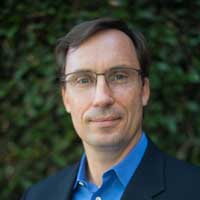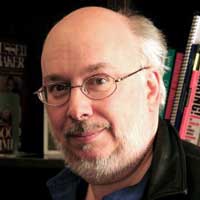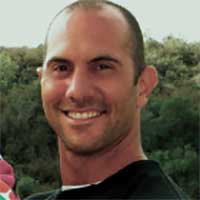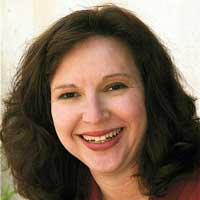
Patrons at a bar in New York City watch as former FBI Director James Comey testifies during a Senate Intelligence Committee hearing June 8. (Photo/Mary Altaffer, The Associated Press)
Looking at the blurred lines between political news, reality TV and fake news
USC experts explain how political events become a highly watched spectacle influenced by pop culture and entertainment
Cable news networks are the must-see TV of the Donald Trump era: Primetime cable news audiences increased 55 percent in 2016, according to the Pew Research Center, and have stayed strong amid events such as the recent hearings held by the U.S. Senate Intelligence Committee. USC experts explain how such political events and news become a highly watched spectacle influenced by pop culture, ritual, storytelling and, in some cases, fake news.
A lesson in checks and balances

“These hearings provide a civic classroom on our system of checks and balances. It’s like an engineer stress test: This administration is revealing dynamics between and within the branches that we normally wouldn’t see.
“Typically, the attorney general and FBI director are viewed as part of the executive branch, but in fact, the attorney general belongs to what scholars call the ‘presidential branch of government,’ which includes the Cabinet and White House staff. The FBI director is intended to be somewhat independent of the president, given the director’s 10-year term, and is part of the permanent bureaucracy.
“These obscure components of the executive branch can come into conflict, as we saw in testimony. Attorney General Jeff Sessions’ first loyalty was to President Trump, while former Director James Comey sought to protect the integrity of the FBI. … The more we watch, the more we learn about these latent features of our governmental design.”
JOHN ELLIOT “JEB” BARNES
Associate professor of political science at the USC Dornsife College of Letters, Arts and Sciences
Roots in popular culture

“Donald Trump is a product of three different strands of popular culture. For sure, he was one of the reigning kings of reality television. …
“He was also a product of professional wrestling, having performed off and on through the years on the WWE. There, he learned that the way to hold onto your audience was to generate ‘heat’ – that is, to say outrageous things which provoke emotional responses, positive or negative from the audience.
“Third, he was a star on trash talk radio – in particular, on the Howard Stern show, which is where so many of his more outrageously sexist comments come from. …
“None of these formats follow the rules of traditional political journalism, let alone your high school debate team. So many reporters have felt themselves constantly blindsided by Trump and not sure how to find the truth in a discourse that, like the formats from which it originated, consistently blurs the line between fact and fiction.”
HENRY JENKINS
Provost Professor of Communication, Journalism, Cinematic Arts and Education at the USC Annenberg School for Communication and Journalism and the USC School of Cinematic Arts
Discerning what’s real versus what’s fabricated

“The path to the White House, typically forged by lawyers and statesmen, has found a new road from reality television. Is it any wonder that the line between news and sensationalist entertainment has been blurred?
“As we struggle to discern the difference between facts and alt facts, the real and the fabricated, technology is being rapidly developed to produce photo-real virtual avatars modeled from existing photographs. New text-to-speech applications and facial mapping can enable that avatar to say whatever an author wants it to say.
“Trusting the source of our information will become more and more vital as virtual and augmented technology progresses.”
DAVID NELSON
Special project manager at the USC Institute for Creative Technologies
Sharing in the ritual

“At the very moment when many Americans blame the news media for their role in fomenting political polarization, it is, ironically, the news and the media that still bring us together. Case in point: The recent testimony by former FBI director James Comey drew 19.5 million television viewers, plus millions more who streamed, time-shifted or watched the proceedings online.
“Even if many of those millions would not agree on who did what to whom and when, they could agree that viewing the spectacle was a ritual of citizenship, affirming national values and a common national good.
“Since the dawn of television in the 1950s, political spectacles have attracted large audiences. The Army-McCarthy hearings, JFK’s funeral, the Watergate hearings and the Iran-Contra hearings have been opportunities for Americans to reflect on sin, sacrifice, guilt and salvation within the national context. Larger-than-life, these televised trials remind audiences that their own individual stakes in society are bound to a higher notion of what it means to be an American. That notion is the belief that America remains a city on a hill, a home for freedom, democracy and opportunity.”
DIANE WINSTON
Knight Chair in Media and Religion at USC Annenberg School and a fellow at the Center for Religion and Civic Culture
